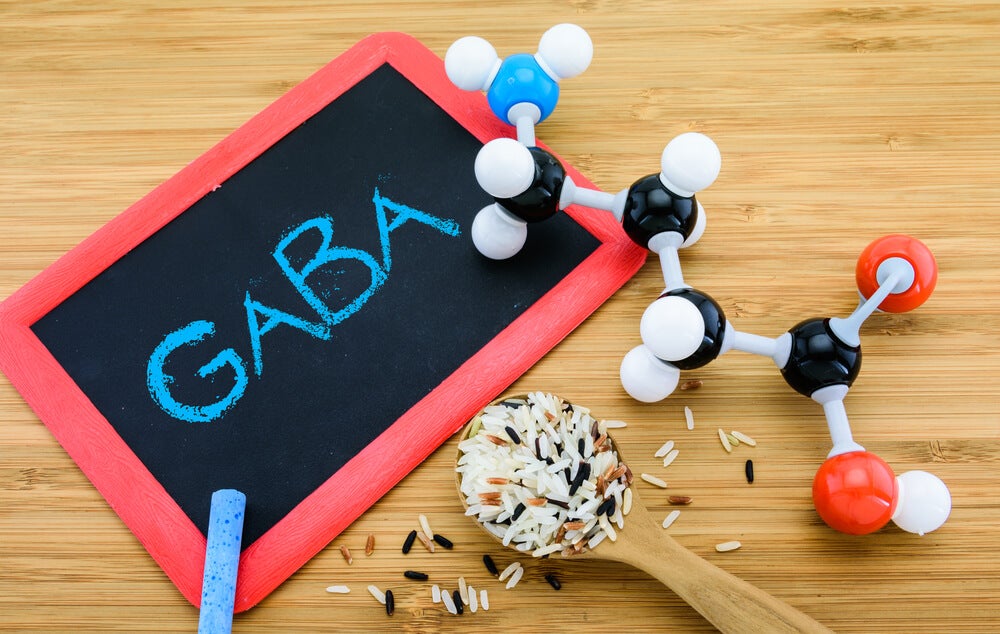Do you feel restless, angry or sad for no apparent reason?Although there are several explanations for this, one possibility is a low density of certain substances in your brain. Our brain can use up to 100 different neurotransmitters, with GABA being one of the most important.
Known as the calm and relaxation neurotransmitter, gamma-aminobutyric acid (GABA) is an amino acid and neurotransmitter that regulates brain agitation by inhibiting excessive neural initiation, resulting in a sense of calm.
- A good balance of your GABA level can reduce stress.
- Make you less anxious and reduce the risk of developing various health problems.
Gamma-aminobutyric acid is one of the most important neurotransmitters, chemicals that brain cells use to communicate with each other; in fact, it is the most common inhibitory neurotransmitter. Inhibitory neurotransmitters decrease the chances of a nerve impulse being triggered.
The main function of GABA as an inhibitory neurotransmitter is to slow down brain activity, in addition to being involved in vision, sleep, muscle tone and motor control.
It is widely distributed inside and outside the central nervous system, found in the intestines, stomach, bladder, lungs, liver, skin, spleen, muscles, kidneys, pancreas and reproductive organs.
Diseases and disorders related to GABA dysfunction include autism, bipolar disorder, depression, schizophrenia, epilepsy, fibromyalgia, meningitis, certain types of dementia (Alzheimer’s disease, Lewy body dementia, frontotemporal dementia) and certain intestinal disorders (Crohn’s disease, colorectal cancer, irritability). bowel syndrome (SII).
In addition, diseases characterized by involuntary movements, such as Parkinson’s disease, late dyskinesia and Huntington’s disease, are also associated with low levels of this neurotransmitter.
One of the most important functions of GABA is its ability to minimize stress and anxiety. When your levels are low, the chances of feeling anxious, anxious and very sensitive to stimulation increase.
In this regard, an article published in the journal Nature states that this neurotransmitter can specifically decrease unwanted thoughts that fuel stress, anxiety, depression and other psychiatric disorders.
Gamma-aminobutyric acid also affects brain activity by modifying brain wave patterns. The presence of GABA increases brain waves associated with a relaxed state (alpha waves) and decreases those associated with stress and anxiety (beta waves).
To talk about how gamma-aminobutyric acid works, you should consider another neurotransmitter, glutamic acid. This neurotransmitter is a natural byproduct of energy production in the brain.
These two neurotransmitters are complementary and opposite. Glutamic acid, as the main excitating neurotransmitter, balances the inhibitory effects of GABA. Abundant neurotransmitters increase the chances of a nerve impulse being activated, so while GABA slows down brain activity, glutamic acid accelerates it.
These two neurotransmitters work together to control brain activity. GABA and glutamic acid not only work together, but can also transform each other.
Glutamic acid is the precursor to GABA and, in turn, can be recycled into glutamic acid if necessary.
In most cases, GABA dysfunction can be directly attributed to the lifestyle. In this sense, according to Dr. Datis Kharrazian, a researcher at Harvard Medical School, excess stress, poor diet, lack of sleep, excess caffeine and gluten intolerance are the causes of “dysfunction. “GABA.
It is also important to note the fact that gut bacteria produce this neurotransmitter, so dysbiosis, an imbalance between good and bad gut bacteria, can lead to low GABA production.
In addition, you should know that excess glutamic acid is converted into GABA using vitamin B6 and the enzyme glutamic acid decarbonis (GAD).
Vitamin B6 deficiency or an autoimmune reaction may interfere with GABA production. Causes of this autoimmune reaction include autoimmune diseases, diabetes, gluten intolerance, celiac disease and Hashimoto’s thyroiditis.
On the other hand, it is necessary to keep in mind that there are many internal chemical changes that can influence the imbalance between glutamate and GABA. In addition, compared to consumer substances, caffeine inhibits GABA activity while alcohol and GABA. the tranquilizers increase it.
There are supplements that contain a synthetic form of this neurotransmitter, however controversy still exists as to whether supplementing this neurotransmitter actually works.
It is not known whether, taken as a supplement, GABA reaches the brain in sufficient amounts to act, in any case, there are those who think these supplements are helpful.
There is also no established dosage for GABA supplements at present, nor is there enough research on the subject to discover the side effects of these supplements. In addition, there is not enough information to ensure the safety of these supplements.
However, there are many other ways to maintain a naturally healthy GABA level. One of these means is food. Researchers analyzed the GABA content of a wide variety of foods, such as brown rice germ, brown rice shoots, barley shoots, soybean sprouts, beans, corn, barley, brown rice, spinach, potatoes, cabbage and chestnuts.
In addition, research conducted by the Institute of Biosciences at the University of Cork in Ireland has shown that probiotic foods increase gamma-aminobutyric acid. Foods such as yogurt, kefir, kimchi and sauerkraut contain strains of bacteria that produce GABA, Lactobacillus brevis and Bifidobacterium dentium. .
On the other hand, if you are concerned about your levels, it is important to keep caffeine consumption to a minimum, as it inhibits the ability of this neurotransmitter to bind to its receptors. Instead of coffee, you can drink tea, which contains less. caffeine and has the amino acid L-Theanine, which increases this neurotransmitter.
It is important to note that another very effective way to increase GABA levels is through exercise. Any type of physical exercise increases levels of this neurotransmitter, but yoga is especially useful. In fact, levels of this neurotransmitter in the brain can increase by up to 27% after a single yoga session.

